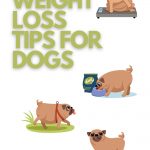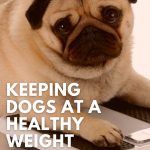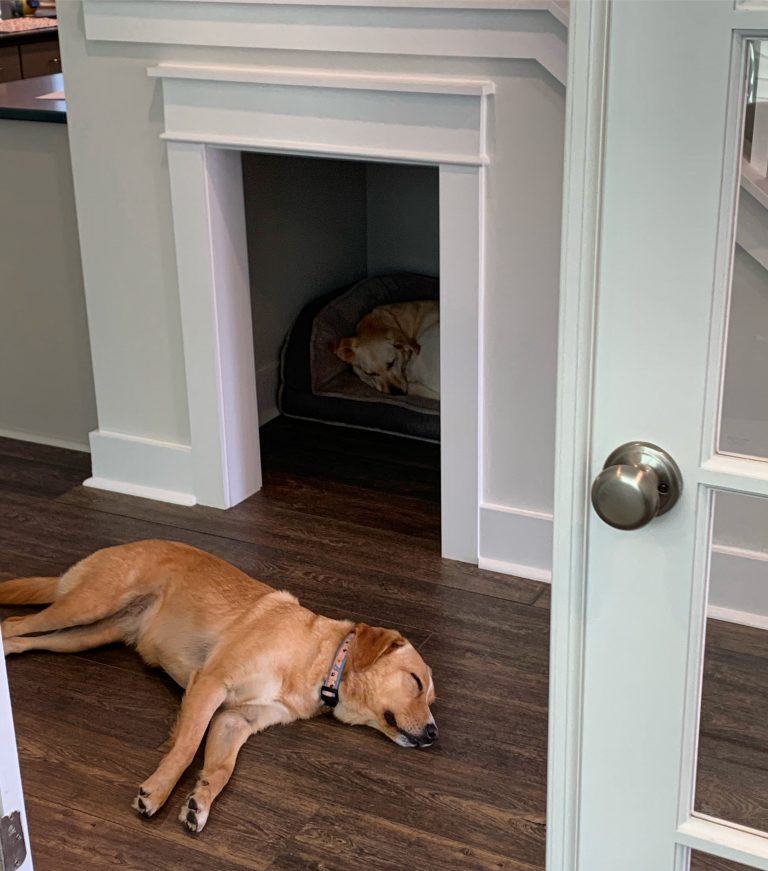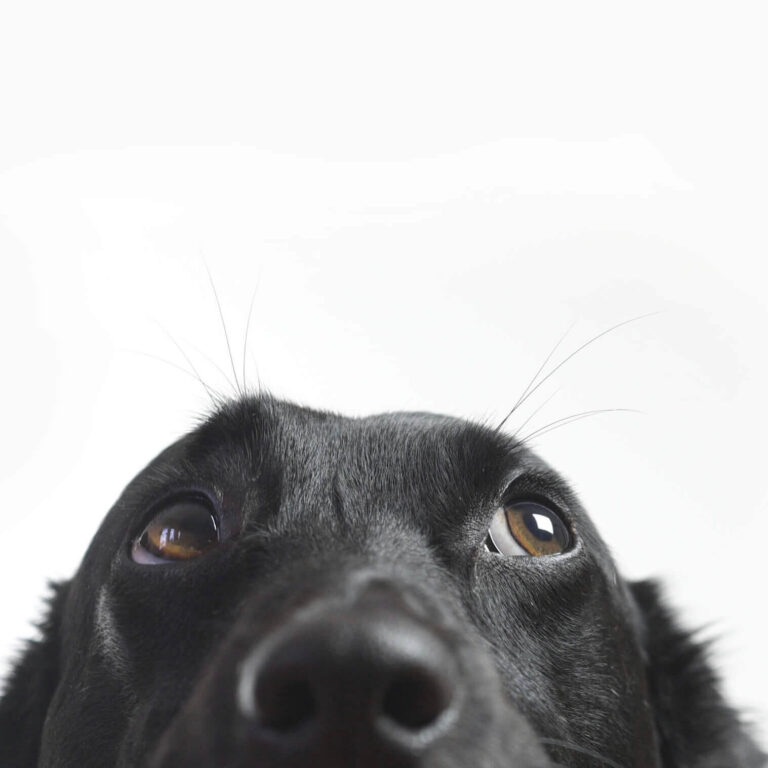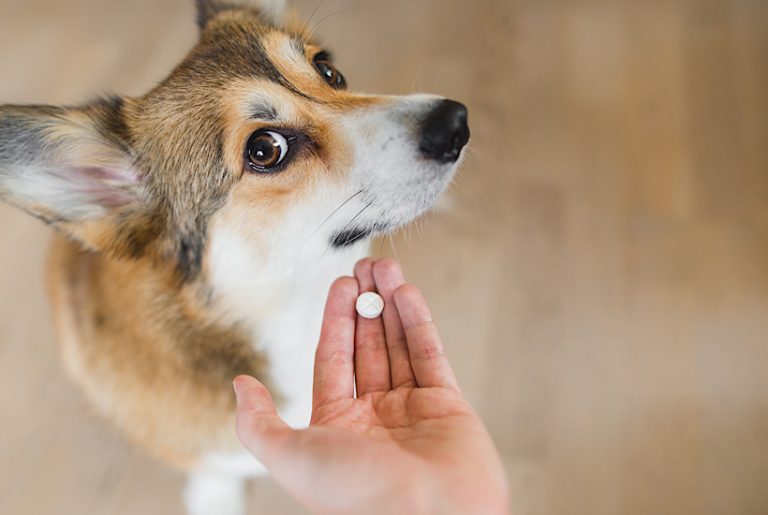Keeping Your Dog at a Healthy Weight
Obesity is not just a people problem. According to the latest results from the Association for Pet Obesity Prevention (APOP), 56% of dogs in the US were considered overweight or obese. That’s like 50 million dogs! And those numbers were pre-pandemic. I can only imagine the problem has grown worse. Your responsibilities as a pet parent absolutely include keeping your dog at a healthy weight.
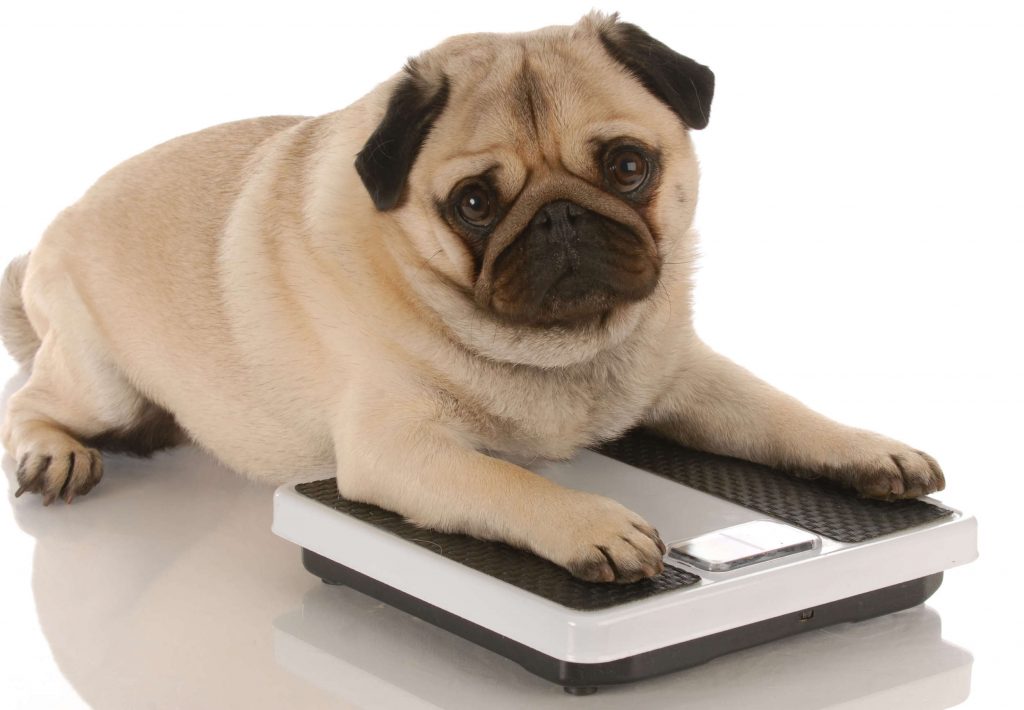
But weight is a sensitive topic for people and pets. Let’s be honest…no one wants to hear their dog is overweight. But if you love your dog, and I know you do, acknowledging they are overweight could save their life. Being overweight increases your dog’s risk of developing diseases, including cancer and osteoarthritis, shortens their overall lifespan, and decreases the general quality of their life. Nobody wants that for their beloved canine companion.
Health Risks associated with pet obesity
Dogs who are overweight, even moderately so, are at increased risk for a number of health issues. These issues include, but are not limited to:
- Chronic inflammation
- Osteoarthritis and joint pain
- Diabetes
- Heart disease and/or high blood pressure
- Respiratory disease
- Kidney disease
- Cancer
On top of all that, your overweight dog likely has a diminished quality of life. This does not mean your dog is completely unhappy! But low energy levels, fatigue, stiff joints, and aches and pains are all things that make it harder than it has to be for your dog to enjoy life.
How do i know if my dog is overweight?
Ask your trusted veterinarian for your dog’s Body Condition Score, and what your dog’s score means. The Body Condition Score is based on the evaluation of fat distribution at the ribs, waist, and hips. Your dog is assigned a number of 1-9 (some veterinarians use a scale of 1-5). An ideal Body Condition Score is 4 or 5 on the 9 point scale. Scores of 6-9 indicates your dog is overweight, or even obese.
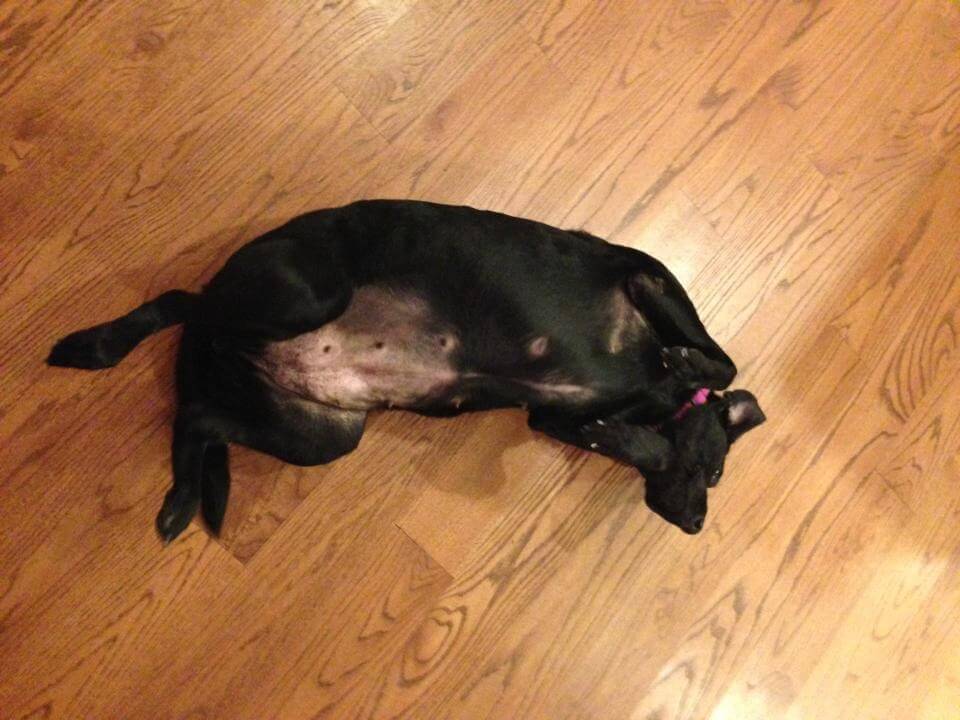
Over a year’s time, she whittled her waistline by over 20 lbs!
How can I help my dog to lose weight?
If your dog falls into the overweight or obese category based on their Body Condition Score, you will need a nutrition and exercise plan to reduce their excess weight. It is not as simple as just cutting back on your dog’s food, as there is a nutritional balance to maintain. You don’t want to inadvertently trade overfeeding for underfeeding.

Consult with your veterinarian about the ideal weight for your dog, and an appropriate number of calories per day (including treats) to safely reach that weight. If you’re a math nerd, you can read more about how the proper caloric intake is determined here, but your veterinarian will be able to make recommendations based on their knowledge of your dog’s health history.

Subscribe now
For our latest
tips & tricks for
life with dogs!
Discuss exercise adjustments appropriate for your dog’s current condition with your veterinarian also. Your dog’s age and breed will be factors in determining the amount of daily activity your dog needs to reach, or maintain, a healthy weight. However, gradually increase their daily activity to reach the goals. You cannot take a normally sedentary dog, and suddenly go jogging.
It’s not a diet, but a Lifestyle change
Dieting is hard. But remember this is not so much a diet for your dog, but a lifestyle change to improve their health and longevity. Once your dog has reached a healthy weight, you’ll need to continue following the same practices (with a maintenance level of calories) in order to maintain the success.

Tips & Tricks for canine weight loss
- Don’t rely on portion recommendations printed on the bag or can. These are known for being grossly broad, and in most cases are going to be too much food for your dog.
- However, do read the label as it will tell you exactly how many calories are in a measured cup of your dog’s food.
- Once you know your dog’s target calories, measure accurately! A cup of food does not mean a heaping cup. If you have any doubts, use a food scale to weigh a cup of food and get your eyes on exactly what that looks like in your measuring device.
- Don’t forget to account for treats! Treats are not calorie free, and they should make up no more than about 10% of your dog’s daily calorie intake.
- Use Fruit and Vegetables Your Dog Can Eat as lower calorie treat options.
- If your dog is used to getting lots of treats, you’re probably going to have a very unhappy dog when you suddenly try to cut back. Use a portion of their daily meals as treats, so you can still reward your dog throughout the day, while not adding more calories to their intake.
- It is a good opportunity to check your treat habits though. Treats should be a reward that’s earned. Looking cute, or pestering you, are not good reasons for treating your dog.
- If the dietary cutback still has your dog hangry, try supplementing their meals with no salt added canned green beans. The extra volume will help them feel full, while having a minimal impact to their daily caloric intake.
- Build up your dog’s exercise and activity tolerance gradually. Taking a short walk on a more frequent basis each day may be better overall than taking one long walk each day.

